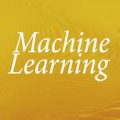Recent studies have shown that it is possible to combine machine learning methods with data assimilation to reconstruct a dynamical system using only sparse and noisy observations of that system. The same approach can be used to correct the error of a knowledge-based model. The resulting surrogate model is hybrid, with a statistical part supplementing a physical part. In practice, the correction can be added as an integrated term (\textit{i.e.} in the model resolvent) or directly inside the tendencies of the physical model. The resolvent correction is easy to implement. The tendency correction is more technical, in particular it requires the adjoint of the physical model, but also more flexible. We use the two-scale Lorenz model to compare the two methods. The accuracy in long-range forecast experiments is somewhat similar between the surrogate models using the resolvent correction and the tendency correction. By contrast, the surrogate models using the tendency correction significantly outperform the surrogate models using the resolvent correction in data assimilation experiments. Finally, we show that the tendency correction opens the possibility to make online model error correction, \textit{i.e.} improving the model progressively as new observations become available. The resulting algorithm can be seen as a new formulation of weak-constraint 4D-Var. We compare online and offline learning using the same framework with the two-scale Lorenz system, and show that with online learning, it is possible to extract all the information from sparse and noisy observations.
翻译:最近的研究显示,将机器学习方法与数据同化相结合,以重建动态系统是有可能的,而这种系统只能使用稀少和吵闹的观测。同样的方法可以用来纠正知识型模型的错误。由此产生的代孕模型是混合的,具有统计部分补充物理部分。在实践中,更正可以作为一个综合术语(在模型解析器中\ textit{i.e.})或直接在物理型模型的趋势中添加。固态校正很容易实施。趋势校正更技术性强,特别是它需要物理模型的配合,但也更灵活。我们使用两个尺度的Lorenz模型来比较这两种方法。长期预测实验的准确性与使用固态校正校正和趋势校正的模型之间有些相似。相比之下,使用趋势校正的代谢模型大大超过在数据同级实验中采用解析校正的模型。最后,趋势校正开启了所有可能的在线模型校正、\text{i.e.我们使用新的测算模型,可以逐步学习新的模型,同时学习新的模型。




